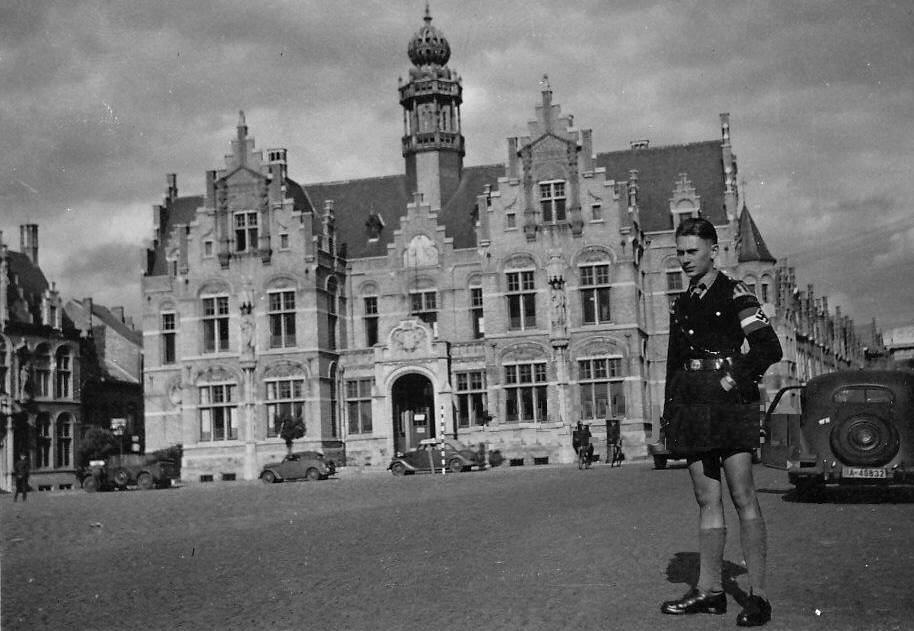
NAZI Political Reorganization

Figure 1.-- After Hitler became chancellor (January 1933), the NAZIs quickly seized control of local government and offices throughout Germany. NAZI SA storm troopers without any legal authority and perhaps a rifle or pistol, simply marched into government offices and threw the both the elected and appointed officials out. Rank and file employees were allowed to remain at their posts. Most of the officials left their offices meekly. There was no real resistance. The police did not intervene.
|
|
After Hitler became chancellor (January 1933), the NAZIs quickly seized control of local government and offices throughout Germany. NAZI SA storm troopers without any legal authority and perhaps a rifle or pistol, simply marched into government offices and threw the both the elected and appointed officials out. Rank and file employees were allowed to remain at their posts. Most of the officials left their offices meekly. There was no real resistance. Local government could have been a ralklying point for resistance, but wth the police standuing by and without a force like the SA, local government was quickly inmder Hitler's control. The police did not intervene. Germany as a result of the unification of formerly independent states into the German Empire (1871) was a federal state in which the Landen had coniderable authority, This posed a problem for Hitler and the NAZIs who wanted a dictatorship and a centralized state withouit constitutional complications. Instead of complicated constitutional changes, Hitler simply created new politiucal dividions. The NAZIs divided the Reich into 42 districts which were called 'Gaue', esentially new Landen (states). Each Gau was overseen by a District Leader (Gauleiter). They were essentially govenors, but without any real constitutional constraints. They were more like princklings in fiefdoms. They were appointed by Hitler personally. Most were selected for theor loyalty to him. They reported directly to him. While a Gauleiter was essentially a NAZI Party post, they ran local government. The Gauleiter for Berlin was Dr Joseph Geobbels who was also the Propaganda Minister. Each Gau was organized on a military basis. They were subdivided into circuits (Kreise) led by a Kreisleiter (Circuit Leader). Berlin had, for example, 10 Kreise and each Kreise was in turn divided into Local Groups (Ortsgruppe) headed by an Ortsgruppenleiter of which Berlin had 269. Each Ortsgruppe was further subdivided into Street Cells (Zellen) overseen by Zellenleiter who were assigned among orher functions to report on any anti-NAZI government activities among the families on that street. German civilians living abroad were included in the system and assigned to a 43rd Gau.
HBC

Navigate the Boys' Historical Clothing Web Site:
[Return to Main NAZI government page]
[Return to Main NAZI page]
[Return to Main World War II page]
[Introduction]
[Biographies]
[Campaigns]
[Children]
[Countries]
[Deciding factors]
[Diplomacy]
[Geo-political crisis]
[Economics]
[Home front]
[Intelligence]
[POWs]
[Resistance]
[Race]
[Refugees]
[Technology]
[Totalitarian powers]
[Bibliographies]
[Contributions]
[FAQs]
[Images]
[Links]
[Registration]
[Tools]
[Return to Main World War II page]
[Return to Main war essay page]
Created: 1:43 AM 11/3/2013
Last updated: 1:43 AM 11/3/2013



